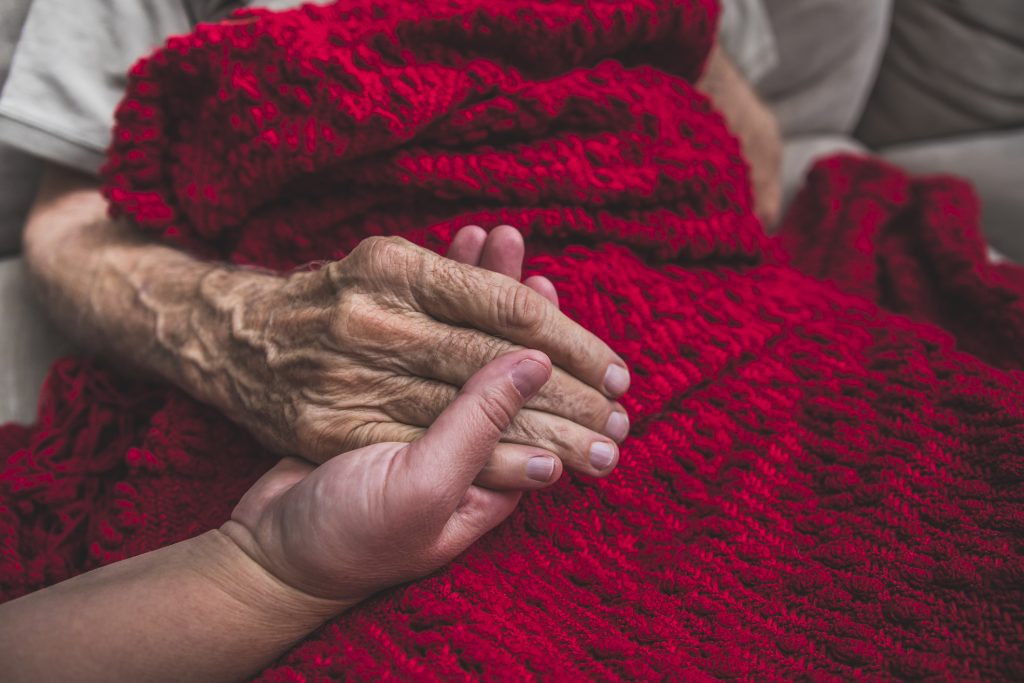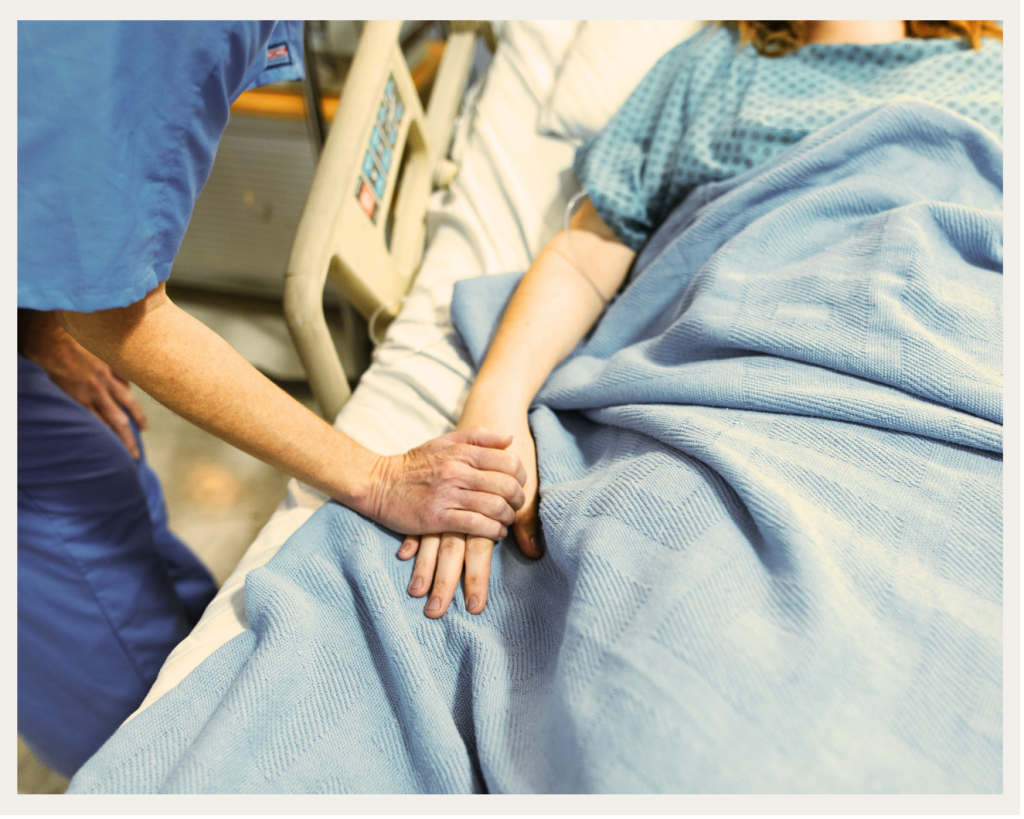End-of-Life Process
Contact Hours: 1
Author(s):
Madeira Fountaine RN, MSN, PHN
Course Highlights
- In this course, we will learn about the phases of the end-of-life process and why nurses need to identify the signs of each.
- You’ll also learn how to care for patients as they begin their final journey.
- You’ll leave this course with a broader understanding of the common symptoms and behaviors patients will present when they enter into the phases of the end-of-life process.
Introduction
Have you ever cared for someone who was dying, known someone who was in hospice, or just wondered what happens as we die? What exactly does “end of life” refer to? End of life is a broad term, and its meaning can vary from person to person. End of life is a time when death is approaching, usually in a matter of days.
This occurs in various patients experiencing a variety of ailments, including end-stage cancer, dementia, chronic diseases, and someone who may have organ failure after an accident (3).
Often, caregivers have little to no experience caring for a patient experiencing the end-of-life process and can easily feel overwhelmed, confused, and burned out. Understanding what to expect during the final weeks and days of life is imperative to cope with the changes as they occur.
These changes can vary from person to person. Although patients progress through the end-of-life process differently, a recognizable pattern of decline usually occurs. To provide the best possible care and prepare both the dying patient and their family members, the nurse, and caregiver need to be able to distinguish the phases of the end-of-life process: transitioning, actively dying, and final moments.
Transitioning
The transitioning phase, otherwise identified as the pre-active phase, usually signals that a person is approaching the last two to three weeks of their life. During this time, caregivers might start noticing obvious changes, such as an increase in sleeping. A transitioning person can sleep upwards of twenty hours per day. This significant increase is part of an overarching decrease in the patient’s engagement with the world and day-to-day life.
Beyond sleeping, examples of this disengagement include interacting less with friends and family, less desire to do one’s usual activities, and a lack of interest in things that were once pleasurable. Additional signs of a patient transitioning include increased weakness and decreased mobility.
These changes typically include a decline in function, becoming non-ambulatory, chairbound, and ultimately, bedbound. Patients may begin to fall during this time. Progressively, the patient will become more dependent on their caregivers to assist them with activities of daily living (ADL), which include bathing, eating, transferring, toileting, and continence. They will likely become bedbound.
Another indicator that someone may be transitioning is a change in nutrition and intake. Eating and drinking less is an expected part of the decline during this time. Many patients will report a lack of appetite, taste changes, and an overall lack of interest in food and liquids. Changes in swallowing may further complicate a person’s ability to eat and drink.
It is common to downgrade a person’s diet during transition. This might include going from a regular diet down to soft and, finally, to puree. Liquids are usually given in small amounts and with an added thickener. These changes are necessary to prevent choking and aspiration. Fluid overload is a risk at this point and can detract from one’s comfort and cause lung swelling or crackles.
“Approximately 43% of all palliative patients are affected by terminal agitation, which can manifest as restlessness, sweating and patients’ statements as verbal or facial expressions and defensive reactions” (5).
Increased agitation, anxiety, and restlessness may also arise during the transitioning phase. Terminal agitation and terminal restlessness are both unique to the last week or so of someone’s life. They are often caused by physiological changes that occur during the end-of-life process but can also result from medication or emotional changes. Even if the patient had been calm previously, it is important to note that these symptoms may still occur.
Signs of terminal agitation include an inability to remain still, picking at items in the surrounding environment, and increased confusion. Fortunately, some medications can be given at the end of life to promote comfort and stop these symptoms when they arise. Lastly, it is not uncommon for the transitioning patient to have visions of and talk to deceased friends and family – both are normal and could sometimes be interpreted as a welcoming sign from loved ones.

Ask yourself...
- How long does the transitioning phase typically last?
- What is another name for the transitioning phase?
- How do people change while transitioning?
- What are some ways you could care for someone who is transitioning?
Active Dying
Following the transition phase, most patients will enter the final phase of the end-of-life process, the active dying period, which precedes imminent death. It can be hard to determine precisely when this stage begins. This phase usually lasts only two to three days and showcases significant signs of patient decline that differ from the previous phase, including a decrease in alertness and responsiveness.
For example, a patient may go from a semi-comatose state to comatose or obtunded, and minimal reaction should be expected (1). Their eyes may be open or shut, and all extremities have little movement. This period can be described as a deep sleep.
Caregivers often describe it as a time of waiting. Cognitive changes, in combination with previous changes in swallowing, make the intake of food, liquids, and medications unsafe. The patient is at high risk for aspiration. Mouth swabs can be used to hydrate the oral cavity and to care for the mouth.
Medications that are liquid or can dissolve under the tongue are safe and can be used to manage symptoms at the end of life. Hospice patients are provided with a comfort kit with medications should symptoms arise.
Additionally, changes in vitals are expected during this phase, and they typically do not cause the patient any discomfort. For example, temperature fluctuation is common at the end of life. Having an elevated temperature during the active dying phase is not abnormal. This can be remedied with cooling measures such as a towel on the forehead or a fan to cool down the room. The skin may feel clammy as well.
Changes in blood pressure and heart rate may also occur. Blood pressure begins to trend lower during the pre-active phase and can become very low during the last few days of life. The heart rate will usually trend upward and can be well over 100 beats per minute. However, this is just something for the hospice nurse to note and is not usually treated.
Symptom management at the end of life can be difficult. Failure to adequately control symptoms can have a negative impact on one’s quality of life. These symptoms may include pain, respiratory distress, GI issues, and mobility changes (2). Pain while dying is one of the most common areas of concern for someone who is actively dying, and of course, no one wants to see their loved one in pain during their final days of life. The body becomes very sensitive to the slightest movement or touch, which can present challenges for caregivers when considering that the patient still needs to be cleaned, changed, and repositioned.
When the patient no longer communicates comfort, verbal pain cues must be assessed. These include grimacing, a furrowed brow, frowning, and possibly moaning. In some cases, repositioning can be an effective pain-relieving measure. Thankfully, pain can be treated up until death occurs.
Opioids are commonly used in end-of-life care due to their ability to manage pain without hastening death effectively. Morphine is an example of a commonly used opioid (4). Nonpharmacological measures can also be used to relieve pain. This may include things like repositioning and soothing music.
Decreased urination is also common during the active dying phase. This is completely normal and expected. Caregivers may find that they do not need to change diapers as often. Due to more concentrated urine, urine may also appear darker in color, a deep amber color.
Excessive secretions can lead to something commonly known as the “death rattle.” This term is almost synonymous with the last days of life. It can be described as a moist sound that is audible when someone breathes and is a good indicator that death is near. The secretions collect in the throat due to a lack of coughing and the inability to clear them out (8).
Turning the patient on his or her side may help the secretions drain, and medications can be administered to help dry them out. It is important to note that not everyone will experience this, and by the time it occurs, there is a disconnect within the patient, and he or she is not likely to experience any discomfort.
Maintaining skin integrity and preventing pressure injuries is also important during this time. With all the other previously mentioned changes occurring, it can be hard to give the skin the attention it requires. Like other organs, the skin fails in an actively dying patient (9).
This does not necessarily mean that pressure injuries and skin breakdown are inevitable. It is important to consider the goals of care during this time. An aggressive approach to preventing skin breakdown might not be what the patient wants or necessarily needs. Measures for pressure injury prevention might include repositioning, use of pillows for elevation, hygiene, and moisture management.
Ask yourself...
- How long does the active dying phase usually last?
- How is active dying different from transitioning?
- What are some commonly experienced changes during this time>
- Have you cared for someone during this time? What did you find to be most challenging?
Final Moments
It can be hard to imagine the final moments of someone’s life. This is especially true for caregivers and families who have witnessed a steady decline throughout both stages of dying. There are likely to be signs that death is possible at any moment. A patient can be expected to be comatose with little to no response when death is imminent. The obtunded patient appears to be in a deep sleep. They are no longer verbally or physically responsive to voice or tactile stimulation.
In addition to changes in vitals described previously, changes in respiration usually occur. This is typically the most obvious change. Patterns can vary from shallow and fast to deep and slow. Periods of apnea are also normal. Cheyne-stokes breathing may also be present (3).
Skin changes are also expected; pallor, cyanosis, and mottling are signs that death is near. The body may begin to feel cool, especially in the hands and feet. Comfort medications can still safely be used up until death occurs. As mentioned before, foods and liquids should not be given at this point. Caregivers should continue to talk to the patient, as their hearing will remain until the end.

Hospice
Most people wish to die peacefully at home. Unfortunately, for many, this is not the case. Over 30% of people die in a hospital setting (6). Hospice is a form of palliative care and involves caring for the terminally ill as they begin the end-of-life process. A terminally ill patient has a life expectancy of 6 months or less. This is a comfort-focused approach to care. The natural process of dying is accepted and allowed to proceed.
No life-prolonging treatments or procedures are elected. Choosing hospice allows both patients and their caregivers to achieve their end-of-life care goals. Hospice care includes an interdisciplinary team composed of nurses, physicians, aides, chaplains, and social workers. It also includes symptom management and emotional and spiritual support. A bereavement team is available after death. Medicare Part A covers hospice services nearly completely.
Hospice care can be a short or long journey with many ups and downs. For some, the prognosis might be obvious, but for others, it might be filled with many questions and much uncertainty. The benefits of hospice care are proven and can lead to a peaceful death. “The main care focus for patients is symptom management, which improves the quality of the remainder of their life.
Palliative care involves not only the patient but also their family members. Other measures are also taken so that the patients can live life comfortably and maintain dignity” (7). Both caregivers and patients seek to understand what end-of-life care entails and how to maintain comfort at the end of life. Hospice clinicians should spend time providing education on this process to all of those involved.
Spiritual Considerations at End of Life
Taking care of the dying should be considered holistic. Addressing the physical needs of someone who is dying while ignoring any spiritual needs would be doing a disservice. Spirituality is considered the meaning of life. It may include religion, beliefs, or family traditions. It can mean different things to different people.
End-of-life care disrupts patients’ spiritual needs, which tend to be greater at the end of life. Healthcare professionals also frequently overlook these needs (10). Palliative care workers can help address patients’ spiritual needs by showing compassion, humility, and openness.
Dying patients may be conflicted spiritually due to things like guilt and unresolved issues. When spirituality is addressed appropriately, patients can more positively cope with illness. Caregivers of the dying should be aware of the relationship between a terminal prognosis and unmet spiritual needs.

Conclusion
Hopefully, this has been informative and a guide on what to expect during end-of-life care. No two people experience death and dying in the same manner, and it can be challenging both physically and emotionally during the end of life. Proper symptom management during this time is crucial in ensuring that one dies comfortably. One should also consider any unmet spiritual needs and how, if unaddressed, could lead to poor patient outcomes.
Palliative care at the end of life can greatly help caregivers. Hospice can be a great resource for managing symptoms and providing support until death and beyond. Most people do not have experience in caring for a dying person and need education and assistance throughout the journey. Not everyone dying will experience all the symptoms mentioned in this course, and it is important to note that everyone experiences the end-of-life process in their own way and at their own pace.
References + Disclaimer
- Oates JR, Maani CV. Death and Dying. [Updated 2022 Nov 29]. In: StatPearls [Internet]. Treasure Island (FL): StatPearls Publishing; 2024 Jan-. Available from: https://www.ncbi.nlm.nih.gov/books/NBK536978/
- Huffman JL, Harmer B. End-of-Life Care. [Updated 2023 Feb 20]. In: StatPearls [Internet]. Treasure Island (FL): StatPearls Publishing; 2024 Jan-. Available from: https://www.ncbi.nlm.nih.gov/books/NBK544276/
- Lee, E. K., Jeong, H. Y., & Kim, K. W. (2021). End-of-Life Assessments and Communication for Dying Patients and Their Families. Journal of hospice and palliative care, 24(3), 194–197. https://doi.org/10.14475/jhpc.2021.24.3.194
- Carr, D., & Luth, E. A. (2019). Well-Being at the End of Life. Annual review of sociology, 45, 515–534. https://doi.org/10.1146/annurev-soc-073018-022524
- Hirschinger, H., Jaeger, E., Nittka, S., Hetjens, S., Lorenz, C., Remi, C., Saussele, S., Hofmann, W. K., Gencer, D., & Boch, T. (2024). Treatment of agitation in terminally ill patients with intranasal midazolam versus subcutaneous midazolam: study protocol for a randomised controlled open-label monocentric trial (MinTU Study). BMC palliative care, 23(1), 8. https://doi.org/10.1186/s12904-023-01330-1
- Bhatnagar M, Lagnese KR. Hospice Care. [Updated 2023 Mar 13]. In: StatPearls [Internet]. Treasure Island (FL): StatPearls Publishing; 2024 Jan-. Available from: https://www.ncbi.nlm.nih.gov/books/NBK537296/
- Davis, M. P., & Hui, D. (2017). Quality of Life in Palliative Care. Expert review of quality of life in cancer care, 2(6), 293–302. https://doi.org/10.1080/23809000.2017.1400911
- Moons, L., De Roo, M., Deschodt, M., & Oldenburger, E. (2023). Death rattle: current experiences and non-pharmacological management—a narrative review. Annals Of Palliative Medicine, 13(1), 150-161. doi:10.21037/apm-23-507
- Vickery, Jessica; Compton, Lauren; Allard, Jackie; Beeson, Terrie; Howard, Joycelyn; Pittman, Joyce. Pressure Injury Prevention and Wound Management for the Patient Who Is Actively Dying: Evidence-Based Recommendations to Guide Care. Journal of Wound, Ostomy and Continence Nursing 47(6):p 569-575, November/December 2020. | DOI: 10.1097/WON.0000000000000702
- García-Navarro, E. B., Navarro, S. G., Sousa, L., José, H., Caceres-Titos, M. J., & Ortega-Galán, Á. (2023). Nursing students’ perceptions of spiritual needs at the end of life. A qualitative study. Frontiers in psychiatry, 14, 1132581. https://doi.org/10.3389/fpsyt.2023.1132581
Disclaimer:
Use of Course Content. The courses provided by NCC are based on industry knowledge and input from professional nurses, experts, practitioners, and other individuals and institutions. The information presented in this course is intended solely for the use of healthcare professionals taking this course, for credit, from NCC. The information is designed to assist healthcare professionals, including nurses, in addressing issues associated with healthcare. The information provided in this course is general in nature and is not designed to address any specific situation. This publication in no way absolves facilities of their responsibility for the appropriate orientation of healthcare professionals. Hospitals or other organizations using this publication as a part of their own orientation processes should review the contents of this publication to ensure accuracy and compliance before using this publication. Knowledge, procedures or insight gained from the Student in the course of taking classes provided by NCC may be used at the Student’s discretion during their course of work or otherwise in a professional capacity. The Student understands and agrees that NCC shall not be held liable for any acts, errors, advice or omissions provided by the Student based on knowledge or advice acquired by NCC. The Student is solely responsible for his/her own actions, even if information and/or education was acquired from a NCC course pertaining to that action or actions. By clicking “complete” you are agreeing to these terms of use.
Complete Survey
Give us your thoughts and feedback!
